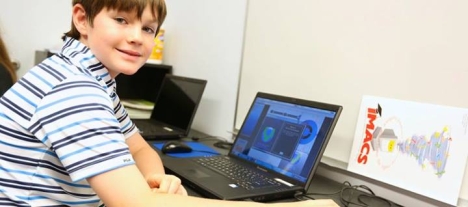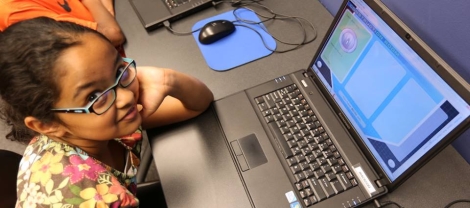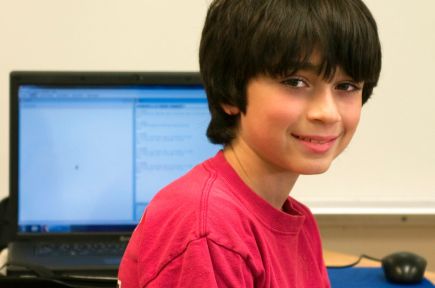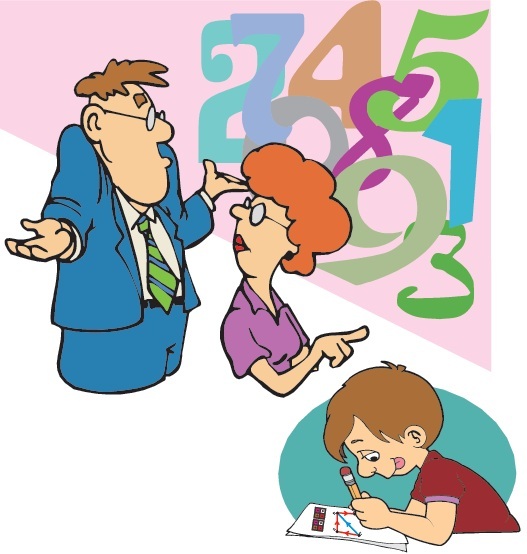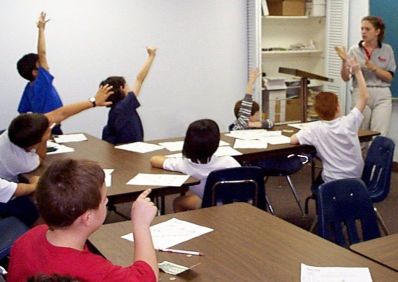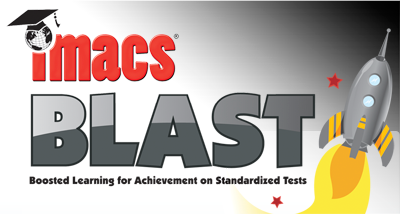
This year IMACS celebrates 20 years of educating talented, young students in mathematics and computer science. In all this time, we have never wavered in our philosophy that providing children with a deep and strong foundation in logical reasoning would enable them to take on virtually any intellectual pursuit with ease and confidence.
In mathematics, we continue to receive regular confirmation of our approach. Recent IMACS graduates often write to tell us of how advanced they are compared to their college math classmates, even at elite universities. Non-IMACS students who were so deftly skilled at applying formulas and algorithms in high school suddenly found themselves in college turning to our graduates for help in proving why these formulas and algorithms worked. It seems this phenomenon is steadily growing in computer science.
As strong advocates of K-12 computer science education, we are heartened by the broad realization that teaching children about this amazing and empowering field is of great importance. At the same time, IMACS urges parents, educators, and policy makers to understand the difference between coding and computational thinking, as well as the consequences of promoting one path over the other. As CS education decisions are made, we must not repeat the ruinous mistakes of math education policy lest we end up with computationally illiterate generation after generation as well.
Learning to Code Isn’t Enough
In a recent article titled “Learning to Code Isn’t Enough,” computer scientist Shuchi Grover offered the most articulate and convincing argument we’ve read on the shortcomings of the “learn to code” craze. In particular, Ms. Grover notes that the cognitive benefits gained through the process of good programming often fail to develop in online coding academies:
“Decades of research with children suggests that young learners who may be programming don’t necessarily learn problem solving well, and many, in fact, struggle with algorithmic concepts especially if they are left to tinker in programming environments, or if the learning is not scaffolded and designed using the right problems and pedagogies.”
“While the fun features afforded by these programming environments make for great engagement, they often draw away focus to the artifacts, many of which employ relatively thin use of computational thinking.”
The IMACS Approach
At IMACS, we have taken a considerably different approach to teaching computer science than the trendy, new organizations. Most importantly, we focus on universal thinking and problem-solving skills. That’s really what any programming exercise comes down to: thinking clearly about how to solve a particular problem. As Ms. Grover points out:
“If the goal is to develop robust thinking skills while kids are being creative, collaborative, participatory and all that other good stuff, the focus of the learning needs to go beyond the tool, the syntax of a programming language and even the work products to the deeper thinking skills.”
In our introductory computer science classes, IMACS deliberately uses programming languages that have trivial amounts of easily-mastered syntax. As a result, our students are able to concentrate their mental energy on learning the core concepts in computer science instead of on memorizing rules of syntax. Rather than focusing narrowly on ideas that only apply to a specific environment, IMACS classes develop computational thinking skills that can be applied to any programming situation.
Learning to Think with Logo
Children may begin taking IMACS Computer Enrichment classes as early as 3rd grade. Computer Enrichment uses Logo, an easy-to-learn language with a strong graphical component, to introduce students to programming ideas. Using a language with graphical components allows even our youngest students to understand and master advanced programming and problem-solving techniques.
IMACS Computer Enrichment places a heavy emphasis on computational thinking — thinking about logic, thinking about processes, thinking about good design. (All this takes place in a fun-filled class that incorporates interesting puzzles and problems.) A working program is not the main goal; rather, it is understanding how and why a program works or doesn’t. With a firm foundation rooted in computational thinking, IMACS students as young as 11 or 12 are well-prepared to move up to our university-level classes in computer science.
University-Level Computer Science
The IMACS curriculum continues with our Modern Computer Science track comprised of three university-level classes. The first course, UCS1, teaches the fundamental principles of computer science using Scheme. Scheme’s expressive yet simple syntax allows students to focus on learning universal concepts applicable in any programming language, even future languages not yet invented.
The second course, UCS2, begins in Scheme, but by the end students are programming in Haskell and Python. One reason that we introduced these additional languages into UCS2 was to show our students just how easy it is for them to learn new languages given their solid foundation.
The third course is our College Board-approved Advanced Placement Computer Science course in Java. This summer IMACS will be updating our APCS course with a new section on how to write Android phone apps. Although app development is not part of the AP Computer Science curriculum, the new component will allow IMACS students to gain experience in developing real applications.
The IMACS Advantage
While it sounds impressive to say that students who complete the entire IMACS computer science curriculum will graduate with significant experience in five diverse programming languages, what matters is that they leave us with something even more highly-prized: the ability to succeed in virtually any coding environment. Incidentally, whether or not IMACS graduates go on to study or pursue careers in computer-related fields, they gain an unfair advantage over their peers throughout their lifetimes thanks to their unmatched ability to dissect problems and articulate solutions. IMACS CS alumni, we look forward to receiving your emails.
It’s standardized stressing, um, that is, “testing,” season in the US again. Scores will soon be crunched, the debate as to whether they belong in teacher evaluations will rage on, and powerful and connected people will quote the results, no matter what they are, in support of their agenda. But regardless of what the numbers say, will outcomes actually improve for the constituency that this annual exercise claims to be benefiting, that is, the students?
Of course not. Worse yet, for all the dollars and time and energy expended by all involved, US students are worse off by many measures. Whether you ask at the university level or at the K-12 level, teachers lament the declining level of competency that students gain during their school experience.
I Passed the AP Exam and All I Got Was This Worthless Score
In February, American Public Media reported that several universities will no longer give credit to students who passed AP exams. More and more, professors are finding that even these students, who are typically advanced among their high school peers, are arriving unprepared to handle the rigor and complexity of college courses.
“[T]he general problem of college readiness ‘raises questions about whether the courses students took in high school, that might have been labeled AP or dual enrollment, were really providing students the preparation in writing and research that college itself will emphasize.’ ”
— Carol Geary Schneider, president of the Association of American Colleges and Universities
If you haven’t read the highly-publicized resignation letter from New York public school teacher, Gerald Conti, you really should. That a single teacher’s grievance on the destruction of his profession went viral tells you just how widely and deeply this topic strikes a chord.
“The development of plans, choice of lessons and the materials to be employed are increasingly expected to be common to all teachers in a given subject. This approach not only strangles creativity, it smothers the development of critical thinking in our students and assumes a one-size-fits-all mentality more appropriate to the assembly line than to the classroom.”
— Gerald Conti, Westhill High School
Now comes word that some states are rolling out new tests to meet the Common Core State Standards before the higher-level skills they require can even be taught. Should we expect anything other than a continued decline in US public school education when we are continually met with the same stuff, different decade?
Let’s Start at the Very Beginning — A Very Good Place to Start
What would it take for real reform to happen? First of all, time. You can’t just take older students who have been raised on weak curricula, throw a test requiring critical thinking at them, and expect them to respond well on any level. Critical thinking skills take time and experience to build, and the damage done by years of teaching to the old test cannot be undone in short order. This is especially true when teachers have neither the flexibility nor the training to teach critical thinking properly.
For meaningful and lasting reform to come about, deep changes need to start in the primary grades where minds and attitudes toward learning are most malleable. In US public schools, there has been a tendency for the brightest teachers to accumulate in upper grades where more complex subjects, larger bodies of knowledge and greater numbers of students require stronger teaching skills. These positions tend to pay more as well. On the face of it, this makes sense if you assume that teaching the skills of critical thinking, complex problem solving and abstract reasoning to younger children is less valuable. This is where our mindset as a nation must shift radically because, not only is imparting these essential skills to young children arguably more valuable, it takes incredible teaching talent to do it well.
Learn to Think, then Think to Learn
Why is teaching these skills at a young age so important? Because of all the good that would follow from children starting with a strong foundation. As any secondary school teacher will tell you, when a student arrives in class with these skills in place, teaching more complex ideas and larger amounts of information to that student is a breeze. He or she has a sense of how to gather and assess information, dissect and formulate arguments, and articulate thoughts clearly and effectively. Furthermore, he or she usually wants to learn because past experience hasn’t been one of yearly frustration, grade level after grade level.
Students who first learn to think subsequently use those advanced thinking skills to learn with significantly improved outcomes for the student. They learn more, and they learn more deeply. They feel greater confidence and control. The in-born love of learning is nurtured, which, along with higher-level thinking skills, serves these students well in high school, college and beyond. If you can envision the positive ripple effects through society of teaching this way, then you will understand why having more talented teachers at primary grade levels would be one of the most effective components of undoing the damage of high-stakes testing.
This month’s guest blog post comes from Christopher Tiwald. Christopher studied the Elements of Mathematics curriculum from 6th to 9th grade as a student in Lincoln Public Schools in Lincoln, Nebraska. He attended the University of Nebraska-Lincoln where he majored in Political Science. After exploring a diverse series of careers, Christopher became a self-taught software engineer and now works at Conductor, Inc. as a Technical Operations Engineer.
spends time with one of his dogs, whose name is Bronx.
The most common complaint you hear from students in math class is “We won’t use this in the real world.” I’m ten years out of high school and six years out of college. I’ve made sandwiches professionally, waxed floors full-time, went to grad school, dropped out of grad school, and worked in professional politics. I can honestly report, “We were wrong.”
It turns out the real world doesn’t reward education as much as passion, self-starting, and the ability to solve problems. The Elements of Mathematics curriculum, or “Elements” as we called it in school, taught me how to learn. For four years I studied problems that bent my brain and stretched my imagination. They required every last modicum of creativity I could muster and, in truth, I wasn’t terribly good at them. I didn’t graduate top of my class — nowhere close. When I did graduate I vowed, “Never again”, and studied liberal arts instead of science in college.
But I couldn’t escape the Elements of Mathematics. Freshman Philosophy is a breeze when you’ve tackled deductive number theory. Supply and demand are trivial when you recognize their curves as simultaneous equations. College grades are driven less by raw IQ than they are by pattern recognition. Once you know how to solve one class of problems, it’s easier to solve again and again. It’s like the compound interest of education — compound interest, of course, being a concept I first encountered in Elements.
I thought it would stop when I finished college. Surely the real world, crammed full of unqualified positions, internships, and the entry-level, would not echo the Elements of Mathematics?
Did you know that if you have five ingredients to make a sandwich, the number of sandwiches you can make with two ingredients is exactly equal to the number you can make with three? Have you ever canvassed door-to-door for a campaign? The most efficient way to knock doors is often an Euler circuit — a route that takes you down every street exactly once. Here’s a fun one from the economist Thomas Schelling: Ski resorts are a closed mathematical system. The amount of time it takes to sit on the lift and wait in its line are inversely dependent. If you make the lift faster, you make its lines longer, because the time people take to ski down the mountain or warm up in the lodge won’t change.
You don’t need to know these things to run a sub shop, win an election, or enjoy a winter vacation, but knowing them gives you a more thorough, practical understanding of the world, one that is immediately useful to employers and in daily life. You learn new concepts quickly because you learned how to learn. You solve problems more efficiently because you’ve solved thousands of similar problems before. The Elements of Mathematics is a competitive edge without qualification. Bosses love it as much as professors.
As for me, I wouldn’t be who I am without the program. Elements changed the way I interact with the world. After wandering from career to career, I landed comfortably in software engineering, something I taught myself. That says less about me than it does my education. All jobs are strings of solvable problems. Once you’ve learned how to think, the rest is easy.
The Institute for Mathematics and Computer Science (IMACS) is pleased to announce Elements of Mathematics: Foundations, a new series of online courses designed for bright secondary school students. EMF is a self-contained program that allows the talented student to complete all of middle and high school mathematics up to Calculus before leaving middle school. The curriculum is the result of more than a decade of research and development by an international team of mathematicians and educators and has been in use with gifted and talented students for over 20 years.
Acceleration vs. The EMF Approach
For mathematically talented schoolchildren, subject acceleration is an oft-advised tool for addressing their need to learn more challenging material. Through subject acceleration, a student works on math curriculum that is normally taught at a higher grade level. While acceleration does help bright students avoid repetition of material in which they are already proficient, by definition it cannot help them avoid the tedium that is the standard US mathematics curriculum.
EMF is not an accelerated version of the standard US mathematics curriculum. Instead it provides a deep and intuitive understanding of foundational concepts. This allows the suitably talented child to progress quickly through material for which others would require significant drill and practice. The curriculum then proceeds to cover concepts in a mathematically consistent way, going well beyond the typical gifted math class offered in schools or online. Topics from the standard curriculum – and much, much more – are taught in an intellectually engaging way.
Six Ways In Which EMF Is Unique
• The EMF curriculum was designed from scratch specifically for gifted and talented children to leverage their advanced capacity for learning and to engage their unique ways of thinking.
• EMF provides a deep, intuitive, and lasting understanding of mathematics as a cohesive body of knowledge that opens the door to scientific discovery and technological advancement.
• EMF focuses on the powerful and elegant ideas of mathematics, the kind that gifted and talented children find deeply satisfying and inspiring.
• The EMF curriculum exposes students to subject areas not found in the standard curriculum such as operational systems, set theory, number theory, abstract algebra, and probability and statistics.
• EMF maintains a level of mathematical rigor found typically at the university level while making advanced concepts accessible and fun for a younger audience.
• EMF gives students a true sense of what it takes to excel in college math courses, which is not the same as the skills needed to do well in standard math classes or at math competitions. EMF students do not have to “unlearn” certain habits before they can move forward with more rigorous math courses.
Is EMF Right For Your Child?
EMF courses are self-study and require a certain level of intellectual maturity. Talented students who have completed all of elementary school math but have not yet completed algebra and geometry would gain the most from EMF. However, students who already have some experience of algebra and/or geometry may still find benefit because EMF introduces concepts that are not covered in standard high school mathematics classes.
Parents who register their child at www.elementsofmathematics.com will be offered the option of having their child take a free online aptitude test to help determine their child’s level of readiness.
It’s the middle of September, so your school-aged kids are likely back in the rhythm of classes, extracurricular activities, homework, and maybe even part-time jobs. Busy schedules are taking shape, and the effort to fit everything in will likely mean some trade-offs. To the extent that your kids still look to you for help with their homework, take this moment to remember (or learn) this: Letting your children struggle at first will lead to better outcomes than if you simply provide the answer in the name of expediency.
In a study published earlier this year, education researchers compared the performance of math students in two groups. One group was given direct instruction when learning a new concept. In other words, they were told at the start how to solve a new type of problem. The second group was given the problem and asked to come up with as many approaches to solving it as they could before receiving any formal instruction. In several comparisons, researchers found that both approaches were effective at imparting basic knowledge of the new concept. However, students in the second group formed a much deeper conceptual understanding and were better able to transfer their knowledge to different situations.
This was the case even though the second group usually failed to come up with a completely correct solution. Researchers call this approach “productive failure.” Their study also showed that a higher number of incorrect solutions correlated to increased learning when those students were finally given instruction on the topic. The more we struggle to figure something out, the better we understand it when we finally do understand it. Why is that?
The theory behind the difference in performance has to do with the learning process. It seems that when we try to solve a new type of problem without new information, our brains have to lean on what we already know. When we are finally presented with correct approach, our brains make connections between the existing knowledge that was called up and the new knowledge. This seems to be a fundamental part of successful long-term learning.
Here’s the sad part for American students and where you, as parents, can try to help your kids. Math education in the US typically follows the direct instruction model. By contrast, consider how students in countries that outperform the US in math learn a new mathematical concept. The section of the video below that starts at about the 1:43 mark discusses the TIMSS 1999 Video Study of eighth-grade mathematics and science teaching in seven countries. Consistent with the “productive failure” study, the TIMSSS videos showed that teachers in countries that outperform the US allow their students to struggle with new math concepts first.
In the best case, your child’s teacher already uses the “productive failure” approach. Keep up the good work at home when it comes to homework help. If the teacher uses direct instruction, then try encouraging your child to think of various ways of approaching the problem before attempting to explain the teacher’s way. Many of us at IMACS are parents too, so we know this is easier said than done with the busy lives that kids and parents lead today. In the long run though, it’s well worth the effort.
Andrew Hacker, emeritus professor of political science at Queens College, City University of New York, recently wrote an op-ed piece in The New York Times entitled “Is Algebra Necessary?” His opinions caused quite a stir in the ongoing debate over mathematics education in the US. IMACS sees value in some of his ideas, such as teaching quantitative reasoning starting in kindergarten, and we agree that schools should not subject students to the “ordeal” of struggling with algebra. However, IMACS believes that education professionals should focus on changing the way mathematics is taught, not on eliminating the requirement to study algebra.
First, consider the attendant consequences of the author’s proposal, which is to create alternative math courses that “familiarize students with the kinds of numbers that describe and delineate our personal and public lives.” Perhaps the large yet still minority percentage of students who cannot pass traditional algebra would be allowed to satisfy their high school math requirement with these alternative classes. As the author sees it, this would limit “misdirecting precious resources” presumably by redirecting them to the new classes. Does that mean we abandon the majority of students who can pass traditional algebra to the ineffective mores of a failing system (now with even fewer resources) because, hey, at least they’re not struggling? Never mind the fact that neither are they soaring as high as they could and will need to as the influence of technology on their world grows!
Teaching mathematics effectively to all students is the outcome we should be striving toward. Make no mistake—we understand the consequences of the prolonged economic stress on families, school districts, and public higher education. It is natural in such times to direct limited resources to activities most likely to lead to gainful employment. So let’s consider a key element of the author’s argument—that high schools are not even teaching students the math skills they will need in the workplace. He writes:
“Nor is it clear that the math we learn in the classroom has any relation to the quantitative reasoning we need on the job. John P. Smith III, an educational psychologist at Michigan State University who has studied math education, has found that ‘mathematical reasoning in workplaces differs markedly from the algorithms taught in school.'”
The author seems to miss the point that the mathematical reasoning skills needed to succeed in the workplace are the same ones needed to succeed in algebra. In both cases, you must be able recognize a problem or challenge, gather information relevant to finding a solution, analyze and synthesize the information to derive a solution, and effectively apply the solution. This takes critical thinking and logical reasoning abilities, and the current pedagogical approach is to try to impart these skills through the process of teaching algebra, almost as a side-effect.
Were the US education system to focus more in elementary school on building these fundamental skills, not only would students find learning high school algebra (and learning in general) easier, they would also be better equipped to succeed in the workplace where problem solvers are highly valued. Furthermore, as learning algebra becomes easier, it becomes less time-consuming, thereby freeing up instructional time to add topics from skill-training to more advanced math as desired. It may sound like an idealistic vision to the millions of people who have come to believe they are “bad at math” when they are more likely the product of bad math curricula, but we have seen this approach work for IMACS students for over 20 years.
“Even in jobs that rely on so-called STEM credentials — science, technology, engineering, math — considerable training occurs after hiring, including the kinds of computations that will be required.”
Of course considerable training occurs after hiring in STEM fields! The need for accuracy and the complexity of the body of knowledge are so much greater in these fields than in others that are more subjective in nature (e.g., the arts) or that rely more on so-called “soft skills” (e.g., politics). We need only to look to the history of the Space Shuttle to understand the consequences of errors in judgment. On a happier note, consider that the successful entry, descent, and landing of the Mars Science Laboratory was almost 10 years in the making. On-the-job training is necessary in many non-STEM fields from law to portfolio management to journalism to costume design. Why should we expect STEM be any different?
“Toyota, for example, recently chose to locate a plant in a remote Mississippi county, even though its schools are far from stellar. It works with a nearby community college, which has tailored classes in ‘machine tool mathematics.'”
As for the Toyota-sponsored Machine Tool Mathematics class, the course catalog description is “An applied mathematics course designed for machinists which includes instruction and practice in algebraic and trigonometric operations. (2 hour lecture, 2 hour lab).” That doesn’t sound like the math is different from what is taught in high school. Rather it sounds more like the way the math is taught is different. With a hands-on lab, it actually sounds like fun! That is a huge distinction and goes back to our main point that we need to significantly change our approach to how we teach mathematics in the US.
At IMACS, we support the idea of schools using math curricula that accurately incorporate real-world examples that students care about. This approach helps put abstract concepts in context but, more importantly, gets students interested in learning and helps them understand how mathematics shapes our world. Those who appreciate mathematics in its pure and abstract form are pretty special people, but math should and can be accessible to the majority as well. There also need to be more options for visual-spatial learners who may not “get” math concepts when presented on a bland white board. Rather than redirecting limited resources to creating new alternative classes, the focus should be on redesigning the algebra curriculum (as well as those for elementary, middle, and the rest of high school math) to present mathematics for what it truly is, a deep discipline centered around simple but beautiful ideas, rather than a bunch of numbers, funny symbols, and boring algorithms.
Unless you’ve been hiding under a rock for the past year, you’ll have noticed that the campaign to teach kids (and adults) how to code is everywhere you turn. As parents, politicians, and educators debate how to produce more graduates in technology fields, the push to introduce computing at an earlier age gets stronger. For example, MIT’s Lifelong Kindergarten group is collaborating on programming software aimed at kids in preschool to second grade. There are even board books for babies on HTML and CSS! We suspect that such novelties are more for tech parents’ enjoyment.
IMACS believes these efforts are well-intentioned and some, when implemented, will be well-designed. But before you click over to Amazon to buy your little drool monster a book on Web design, IMACS can offer you a few examples of how to introduce computational thinking to children through easy activities that are familiar to you, even if you think you’re computationally challenged.
Computational Thinking vs. Coding
This short and informative paper by Jeannette Wing, head of the Computer Science Department at Carnegie Mellon University, explains clearly what computational thinking is and is not. The following excerpted quote is a good summary of the focus of this blog post:
Learning to think abstractly is an essential skill if you want to succeed in computer science. It makes solving problems easier, which in turn makes working on those problems more fun. Notably, students can learn to think like a computer scientist without entering a single line of code into a computer. In fact, our experience in teaching CS is that writing computer programs is trivial for students who first develop computational thinking skills. Let’s see where in our daily lives we can show kids relatable examples to help them make the transition to abstract thinking.
Stacks and Queues
In computing, a stack is an object in which data expressions are stored and retrieved in such a way that the first data expression to be stored is always the last data expression to be retrieved. It is an example of a so-called Last-In-First-Out (LIFO) object. The same idea applies to various real-life constructs that young kids encounter, even babies who love board books.
Obviously, you can’t explain LIFO with words to a baby and expect the baby to understand, but you can certainly demonstrate the concept with your actions. Take the classic Fisher-Price Rock-a-Stack, for example. Start with the rings off the cone and then load them on in the intended manner with the blue ring going on first. Try to get just the blue ring off. Can you do it while the other rings are still on the cone? No, you have to take the rings off one by one with the blue ring coming off last.
Older kids can appreciate the same concept with examples they come across in their lives: unloading plates from the dishwasher into the cupboard, setting the table with said plates the next day, selecting a product such as cosmetics from a store shelf, putting said product back if you decide not to buy it. You get the picture.
A queue is similar to a stack in that it is an object used to store data expressions. In the case of a queue, however, the first data expression to be stored is always the first to be retrieved. Queues are examples of First-In-First-Out (FIFO) objects. Kids encounter them every time they go through a checkout line or a drive-thru. Switch that Rock-a-Stack cone for an empty paper towel roll, and you’ve got yourself a baby-friendly queue.
Sorting Algorithms
Sorting is one of the oldest problems in computer science. Although the end goal (an ordered list) is conceptually easy to understand, getting there can be complex. Add to that the need for sorting algorithms to be computationally efficient and you’ve got yourself an interesting abstract puzzle.
If your kids are old enough to know or learn how to put words in alphabetical order, then make a project out of sorting the books on their bookshelf. Decide on a sorting key such as title or author’s name. For this example, we’ll use title. For the first shelf, ask your child to try a simple bubble sort. Traverse the shelf from left to right, compare the titles of two books, and swap them if they are in the wrong order. Repeat this process until all books on this shelf are in the correct order.
For the next shelf, you can use a simple insertion sort. Take all the books off that shelf and put them in order one by one in a pile on the floor. Each time that you add a book to the ordered pile, be sure to put it in the right place relative to the books that were previously added.
Now that you have two properly sorted sets of books, you and your child can work together to sort all books. Sounds like a good time to use a merge sort. Move the sorted books off the first shelf into another pile on the floor while keeping them properly ordered and separate from the pile of books from the second shelf. Reshelve the books as follows: repeatedly compare the titles of the two books that are atop the two piles, selecting the one that goes first, and continuing until both piles are exhausted.
Object Oriented Programming
An “object” in computer programming is a complex structure containing data fields and instructions. These objects interact with each other to create even more complex computer programs. The beauty of object oriented programming is that you can reuse objects to do common computing tasks without having to reinvent them each time. Over time, programmers can build up a “library” of useful objects.
The following analogy certainly isn’t perfect, but it will help get the point across about these seemingly mysterious objects. If you’re planning an outing with kids, you’ll need a few things to help keep your sanity: nourishment, entertainment, and possibly a change of clothes. So grab three bags and make some objects! In the nourishment object, you’ll probably need fruits, carb snacks, a protein, and beverages. For the entertainment object, how about art supplies, books, sporting equipment, and portable gaming device? Kids are made to get dirty, and the weather may change, so pack a top, bottom, and outerwear in the clothing object. Throw those “objects” in your huge tote “library” and you’re ready to go!
Think Like a Computer Scientist
Planting the seeds of computational thinking, especially the ability to think abstractly, is really a matter of recognizing the examples in your life that can be used to foster discussion with your children. Like any new endeavor, remembering to look at events in a computational light takes practice. You might just find yourself thinking like a computer scientist when it comes to solving the data problems in your own adult life.
Enhance your computational thinking skills with online computer science courses from IMACS! Register for our free aptitude test. Solve weekly IMACS logic puzzles on Facebook.
Show a child some tricks and he will survive this week’s math lesson. Teach a child to think critically and his mind will thrive for a lifetime.
Math word problems confound many students for a variety of reasons. Too often, well meaning parents and teachers attempt to help students struggling with these kinds of problems by offering them tricks or shortcuts for getting to the solution without necessarily understanding what’s going on. Just do an internet search for something like “how to solve word problems,” and you will get a slew of Web pages with tips, tricks and strategies like the following:
• Search for key words that will tell you which mathematical operation you should use (e.g., “lost” means subtraction).
• Cross out non-essential information so that you are not distracted by it.
• Draw a picture to illustrate each step of a problem.
Let’s consider these three examples for a moment. To suggest that looking for key words within the text of a math problem is somehow a “strategy” to solving it more easily seems a bit absurd. Basic reading comprehension skills are obviously essential to solving any problem, math or otherwise, where the information is communicated via natural language. No key word mapping is going to provide a fool-proof way of understanding what a word problem is asking. If you’re starting with a word problem that is well designed and written with clarity, there simply is no “trick” to understanding the words.
The other two examples sound reasonable on the surface, but a closer examination reveals problems with them too. To determine which pieces of information are relevant to the solution (as in Example #2), you need to be able to evaluate and analyze the given information. To correctly translate the words of a problem into a step-by-step illustration (as in Example #3), you need to be able to understand and prioritize the information. In other words, tricks like these seem to require the very skills needed to solve the problem without the tricks! Furthermore, a “tip” cannot tell you whether you have enough information to solve the problem, or how to find any missing information. Only critical thinking and logical reasoning skills can help you there.
This approach of relying on “clever strategies” to replace critical thinking runs counter to the IMACS philosophy of teaching children the fundamental skills they need to solve problems throughout their lives, whether they be elementary word problems or complex Calculus problems, whether it’s making correct change or correcting the flight path of an exoplanet-bound space craft.
Meaningful Strategies That Matter
While silly tricks may work for some students as a short-term fix to “just get through the problem,” there are practical and helpful techniques that should be part of any meaningful approach to understanding and solving word problems.
Pay attention to units of measurement. Word problems commonly feature units of measurement. When finding a solution, it’s important to pay close attention to how you are adding, subtracting, multiplying, or dividing amounts in the problem so that you don’t end up combining “apples and oranges.” If you carefully track the units of measurement through each step of your computation, you can compare the units of your answer to what it should be based on the question. This is a good technique to check the reasonableness of your answer rather than one that “magically” solves the problem for you. Here’s an example:
No one would think that the following approach is right
because adding children to cookies makes no sense! The answer requires a relationship in the form of “X cookies per child” – or, more algebraically,
With this in mind, what makes sense is the following:
While we’re on the topic of cookies, here’s another example:
Most people know to do something with ( 4,500 / 3 ) and 5, but what? Looking at the question in the problem, we know that our answer should be in the form of “X cookies.”
What if we set up the equation correctly
but then worked out our answer as follows?
Hmm … 300 cookies per minute per minute? The fact that our answer is not measured purely in cookies as expected tells us that we made a mistake in our calculation.
Use reverse word problems to practice abstract thinking. The process of solving word problems often requires us to connect a real-life situation described in language we know with the abstract version written with variables and equations. As with learning to speak a foreign language, thinking abstractly becomes more natural with practice and regular use, and the earlier you start, the easier it is.
When kids are younger, parents can help them to develop an intuition for abstract reasoning by doing “reverse” word problems in the guise of creative play. Start by writing down an equation such as 7 + ___ = 10. Next, ask your child to imagine a story that goes with this equation. He might say something like, “It takes 10 gold stars to get extra recess, and I already have 7. How many more stars do I need?” For 3 + (8 × 2) = 19, she might say, “When I started robotics, I took 3 introductory classes. Then, I took 2 classes per week for 8 weeks. So, I have taken a total of 19 classes.”
Be sure to keep the level of difficulty appropriate for your child’s math ability. Frustrating him with a computationally hard problem will only defeat the purpose of teaching him to think abstractly.
Word problems can be used effectively to teach important mathematical concepts and to help give real-world context and purpose to what may seem like useless hieroglyphics to some people. But without a firm foundation in critical thinking and logical reasoning skills, a student is sure to be at a disadvantage when trying to evaluate, analyze, prioritize, and synthesize the numerous pieces of information embedded in the narrative. Tips, tricks, and strategies may help at the margins, but there is simply no substitute for genuine understanding.
IMACS students in a math enrichment class.
Former IMACS instructor, Brandi Parsell, offers advice on how to address the ultimate question in a way that stimulates logical reasoning and critical thinking skills.
It can be endearing, or at times downright frustrating – that eternal question, “why?”. When bright children discover that single word, they seem to grab onto it and won’t let go. Sometimes the answers are simple, and sometimes we find ourselves at a complete loss for words.
This innocent question, however, is a signal to parents that a child is ready to be challenged to think logically. The creativity is there – we can see it in their everyday play. It is how we encourage that creativity and shape it into critical thought that will form a solid basis for a child’s learning ability.
Critical thinking is one of the hardest subjects to teach older students; any schoolteacher will tell you so. But if you begin to give your children the necessary tools when they are as young as three or four years old, they can develop these skills more easily. When the question of “why” is put once again on the table, the best policy is to ask, don’t tell. Challenge your children; ask what they think the reason might be. Chances are you will be pleasantly surprised.
Often parents believe that when their child reaches school age, he or she will at last find satisfaction for that curiosity. Talented students, though, may become bored with traditional school curriculum. When such a student is not challenged to exceed our expectations, this frustration often takes the form of careless errors and lack of effort. If children begin to develop these kinds of bad habits, too often they give up quickly when faced with a truly challenging problem. It is important that bright students are encouraged to go beyond what is merely “expected” of them.
“Talented students owe it to themselves to stretch their minds as far as they can,” said Burt Kaufman, co-founder of IMACS. Burt spoke from experience. For over 40 years he worked closely with bright pre-college students and developed challenging mathematics curriculum materials to stimulate them to become true students – disciplined logical thinkers with an insatiable thirst for knowledge and understanding.
Parents are a child’s first teachers, and the best teachers don’t give away the answers. Turn your child into a detective, and yourself into their greatest source for clues.
An IMACS foundation in logical thinking sets students on a path to successful learning. Take our free aptitude test to begin your IMACS journey.
IMACS introduced Boosted Learning for Achievement on Standardized Tests (BLAST) in 2007 to help second graders who are struggling in math. After receiving a growing number of inquiries from parents searching for an effective remedial math program, we saw that it was time to make the benefits of our curriculum more widely available. IMACS is all about helping students reach their potential in math, and we firmly believe in this philosophy for all children regardless of natural ability.
BLAST, which is funded primarily through corporate sponsorship, is open to students who score below the 70th percentile in problem solving in first grade on the Stanford Achievement Test. Here are some highlights from our inaugural BLAST class:
• The average increase in math score across all students was 15 percentage points.
• Two-thirds of the students improved their math scores. The average increase among this group was 27 percentage points.
• Of the students who improved their math scores, more than half also improved their reading scores by an average of 19 percentage points.
• Every student in the bottom third of the class according to the first year’s math scores increased his or her math score. The average increase among this third was 29 percentage points.
• All but one of the students in the bottom third of the class according to the first year’s reading score increased their reading scores. The average increase among this third was 23 percentage points.
While our BLAST kids gained a lot from their IMACS experience, we were also able to take away some valuable lessons on how to help students who are having difficulty with math.
Learn to Think, THEN Think to Learn
Most children who come to us struggling with math have not sufficiently developed the ability to think logically and critically. And this is true whether they are below average or gifted and talented. Most have never been exposed to any kind of training in this area because the traditional approach to teaching is based on the assumption that logical reasoning and critical thinking skills will develop almost as a side benefit of studying the core subjects. It’s not quite putting the cart before the horse. Rather it’s more like having a stand-alone cart and hoping that a horse will trot on over to be attached. What we’ve found in both our BLAST program and in our advanced math program is that if you start children off by teaching them how to think logically, it makes a world of difference in their ability to learn whatever material comes after. And mathematical logic, like other subjects, can be taught and learned. It’s the intellectual equivalent of pumping iron in the gym when you’re training for competitive sports. Students first build up their critical thinking skills so that they are ready and, just as importantly, feel ready to be take on a challenging subject.
Individual Attention Encourages Risk-Taking
So how do we help students feel ready? It’s really just about rekindling and harnessing the natural curiosity they were born with. When a child is struggling with math, he or she may not feel comfortable speaking up in large group settings to answer questions or ask for help. Children with above average math abilities may feel the pressure of expectations. They may believe that they have to understand right away and cannot make mistakes. Those who are not naturally strong in math may fear being labeled as “dumb” if they give incorrect answers or admit that they don’t understand. They may also worry that others will think they are trying to “act smart” if they participate in class. At IMACS, we are able to break through this barrier of self-consciousness by working with children in small groups. When our students realize that they are in a place where it’s okay to take risks and make mistakes, they let down their guard and allow their natural curiosity take over. Simply put, they rediscover the joy of learning and leave the program feeling empowered to take on challenging work. A parent of one of our students summed it up beautifully: “BLAST went beyond my expectations. In a matter of 10 weeks, I have seen my child work with numbers on her free time and love math. Her self-esteem is soaring unbelievably.” That’s exactly the kind of feedback that makes us want to rise and shine each and every morning.
While we have our own in-house logic exercises that we use with our students, we’re also a big fan of logic games by ThinkFun. We like that ThinkFun games are affordable and constructed well to last a long time. And they usually have multiple levels of difficulty, which makes them accessible to a wider range of ages and abilities. Another great source are the weekly logic puzzles posted every Friday on our Facebook page. If you have a suggestion for other logic games or ways to help struggling students, please leave a comment.
If you are interested in being a corporate sponsor of BLAST, please send us an email at info @ eimacs.com.
IMACS online classes are designed to fit into your schedule. Take our free aptitude test to see if our program is right for you.
« Newer Posts — Older Posts »







